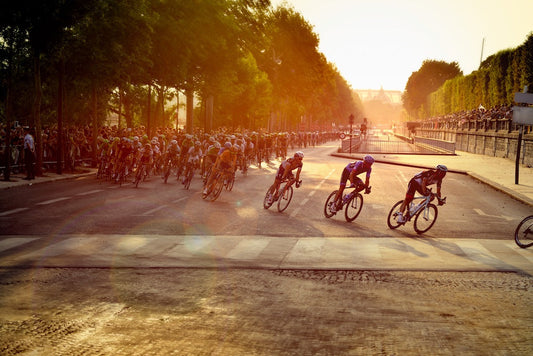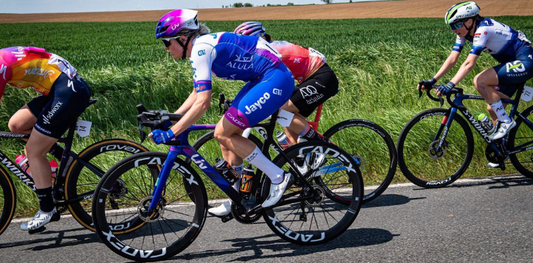Hypotonic vs Hypertonic: Guide to the Best Sports Hydration Drink
Explore the difference between hypotonic, hypertonic, and isotonic sports drinks to determine the best choice for your individual hydration needs.
Reviewed by our Expert Panel
28 September 2018
Have you ever become confused by the terms Hypertonic, Hypotonic and Isotonic when shopping for sports drinks? Choosing the right one shouldn't be a headache! In this blog, we'll explore the differences, including their tonicity levels, what lifestyle and purpose they're designed for, and discuss why PREPD is the best option to enhance your hydration and performance.

Isotonic, Hypotonic & Hypertonic: What's the Difference?
Before unpacking the difference between isotonic, hypotonic, and hypertonic sports drinks, it is crucial to define tonicity, as this dictates how fluids are absorbed post-consumption.
Tonicity refers to the measurement of sugar and salt concentration in a drink compared to the blood's concentration. These tonicity levels define the sports drink's category. For example:
- Hypotonic: Low in tonicity
- Hypertonic: High in tonicity
- Isotonic: Similar tonicity to blood
Understanding the science behind sports drink tonicity holds immense importance, particularly for your hydration during training and competitions. So, lets break down the terms isotonic, hypotonic, and hypertonic to determine the benefits of each sports drink:

Tonicity refers to the measurement of sugar and salt concentration in a drink compared to the blood's concentration.
Isotonic:
Most sports drinks on the market fall into the isotonic category, meaning they share a similar tonicity to the blood (as mentioned above). Generally, isotonic drinks contain approximately 6-8% carbohydrates, providing athletes with a balance of energy, electrolytes, and fluid.
However, as Mettler et al. (2006) identified from their market research, most isotonic sports drinks are borderline hypertonic, which can cause gastrointestinal upset and the feeling of fluid sloshing in the stomach post-consumption. As such, isotonic sports drinks are recommended for people undertaking short bursts of high-intensity activity, where their main priority is pure-energy, not hydration. Some popular isotonic sports drinks on the market include:
- Gatorade
- Powerade ION4
- Staminade
- Maximum
- Science in Sport - GO Electrolyte
- Nuun Performance
- Pure Sports Nutrition - Pure Electrolyte Hydration
Isotonic sports drink formulas share a similar tonicity to the blood, providing a balance of energy, electrolytes, and fluid.

Hypertonic:
Hypertonic sports drinks are renowned for their high tonicity, with most formulations composing of 10% or more carbohydrates. These hypertonic formulas are designed to slow hydration by delaying gastric emptying of fluid from the stomach into the small intestine, where it is absorbed. Instead, they prioritise rapid energy-restoration with the help of their higher-sugar content.
Consequently, however, hypertonic sports drinks present multiple issues. Firstly (as mentioned above) by delaying the gastric-emptying process, this can cause gastrointestinal discomfort which may impact your ability to perform. Second, these drinks fall short on the hydration front, which can be ineffective and dangerous for individuals:
- Exerting for 1 or more hours
- Spending extended periods in the heat
As such, hypertonic sports drinks are only suitable where energy and nutrients are the main priority and dehydration is insignificant. Popular hypertonic sports drinks include GU Roctane Energy Drink Mix and Lucozade Energy.
Hypertonic sports drinks prioritise energy-production and slow hydration significantly.

Hypotonic:
Hypotonic sports drinks stand out in the market due to their fluid-absorbing potential. Compared to isotonic and hypertonic drinks they are low in tonicity and offer a carbohydrate content of less than 6%. As Rowland et al.'s (2022) research identified, hypotonic sports drink formulas are the best option as they facilitate fluid absorption faster in the small intestine while providing essential glucose for the body. This makes them an ideal solution when:
- Engaging in prolonged physical exertion (for 1 or more hours)
- Prioritising hydration becomes paramount.
By promoting efficient fluid uptake and incorporating minimal carbohydrates, hypotonic sports drinks emerge as the prime choice for individuals striving to replenish fluids effectively during demanding activities.
We also recommend consuming food and fuel sources such as gels, bars, and snacks separate from this substantial fluid intake to further-meet your energy needs.
The lower concentration of hypotonic drinks allows for faster fluid uptake than isotonic drinks.

Issues with Modern Sports Drinks
Despite dehydration remaining a significant barrier to peak endurance performance, sports drink formulations haven't substantially changed since being invented over 50 years ago. The biggest issue with these formulations include:
- Tonicity Levels - Too much sugar for optimal hydration in the small intestine.
- Gut Hydration - Ignore the hydration potential of the large intestine, which can absorb up to 5L of fluid per day.
PREPD: The Best Hypotonic Sports Drink
What is PREPD Hydration?
PREPD is an innovative hydration enhancer, backed by over 20-years of research from Flinders and Yale Universities. Our hypotonic formula has been designed to both revolutionise how individuals approach their hydration strategies, and account for the limitations of other conventional sports drinks on the market.
Specifically, by providing a clinically-approved sustained fibre that unlocks an additional 5L of fluid absorption in the small intestine, while maintaining a low tonicity. Helping individuals maintain their hydration levels, and perform better for longer.
PREPD's Two-Step Hydration Strategy:
Compared to other sports drinks, PREPD is a two-step strategy. PREPD PRIME (Step 1) hydro-loads your body with our clinically-tested Resistant Starch formula to optimise fluid absorption, effectively preventing dehydration. In step 2, PREPD RECOVER (Step 2) boasts a hypotonic composition, featuring minimal sugar alongside an ideal blend of electrolytes and our unique sustained fibre to replenish fluids and essential salts lost post-physical activity.
Check out some of our range below!
Final Verdict
Understanding the differences between hypotonic, hypertonic and isotonic sports drinks is crucial for optimising your hydration strategy. While traditional sports drinks available have their benefits, PREPD stands out as an innovative, healthier game-changer in the field of hydration.
Revolutionise your hydration game with PREPD – the ultimate key to unlocking peak performance! Experience the difference firsthand. Fuel your workouts, boost recovery, and elevate your performance to new heights. Don't just drink, thrive! Explore PREPD's range now: https://prepdhydration.com.au/collections/all-products"
1. How do I determine which sports drink is best for me?
Consider the intensity of your activity, and your individual needs. For example, hypotonic drinks have lower tonicity, allowing for faster fluid absorption. Whereas, hypertonic and isotonic options benefit individuals seeking an energy boost.
2. Why is tonicity important in sports drinks?
Tonicity influences how fast and efficiently your body absorbs fluids. As such, it's important to consider your individual lifestyle and requirements before choosing a sports drink.
3. Can PREPD be used alongside other hydration products?
Absolutely! PREPD is designed to complement your existing hydration routine. Its unique formulation can enhance the effectiveness of other sports drinks or water when used in combination, ensuring superior hydration results.
4. When should PREPD PRIME and RECOVER be consumed?
We recommend consuming PREPD PRIME 10-18 hours before exercise to boost hydration levels. Contrastingly, PREPD RECOVER is ideal for immediate consumption post-physical activity to aid in swift rehydration and recovery.
"I have been recommending PREPD to clients for a number of years"



